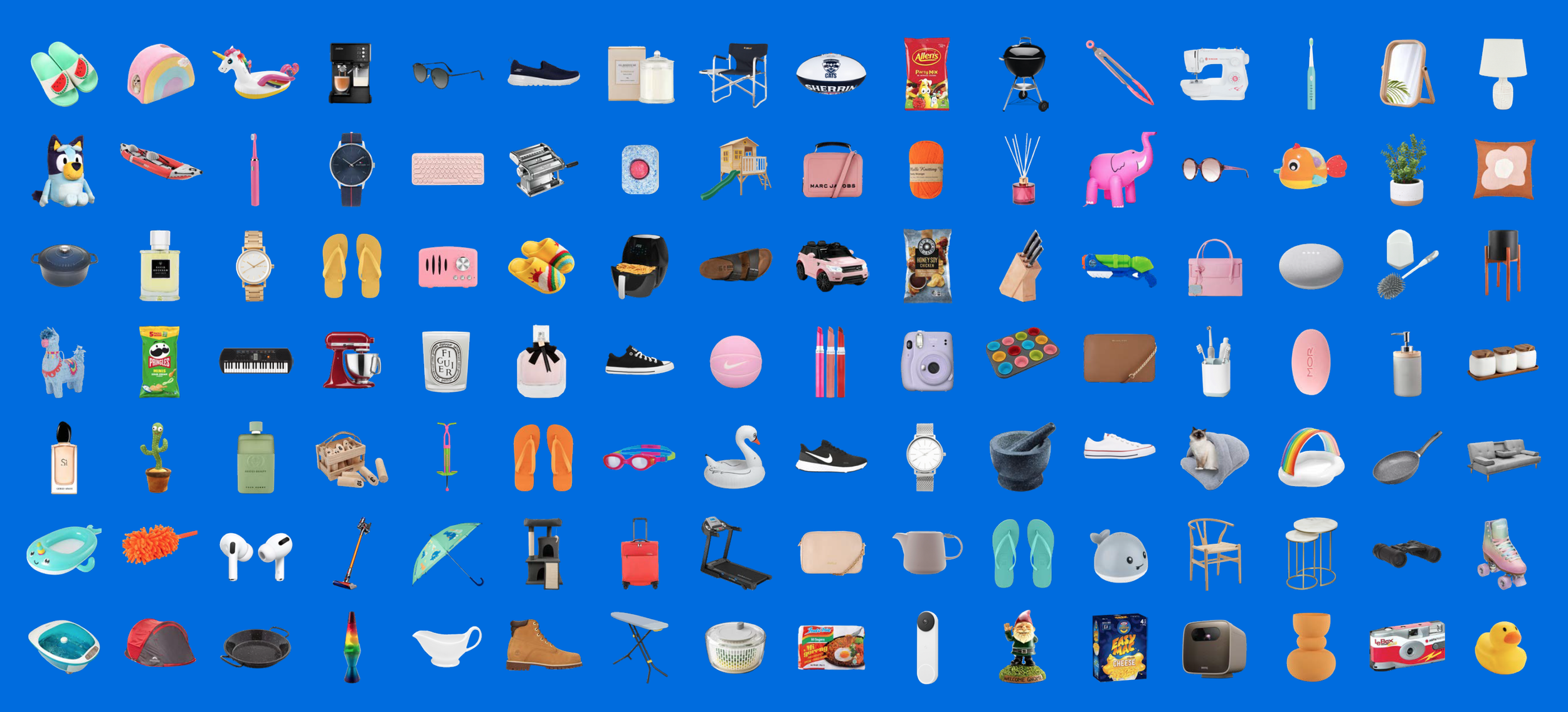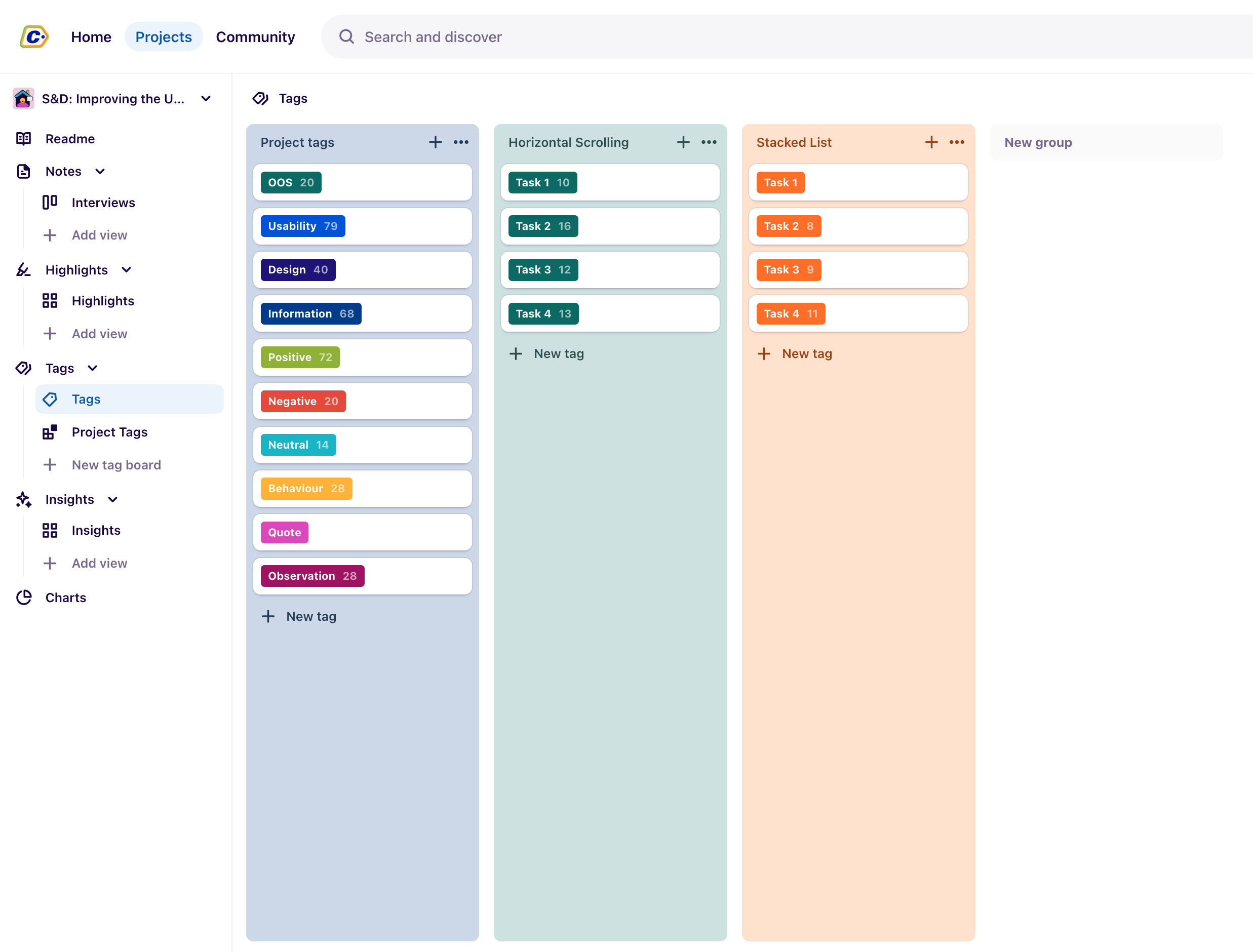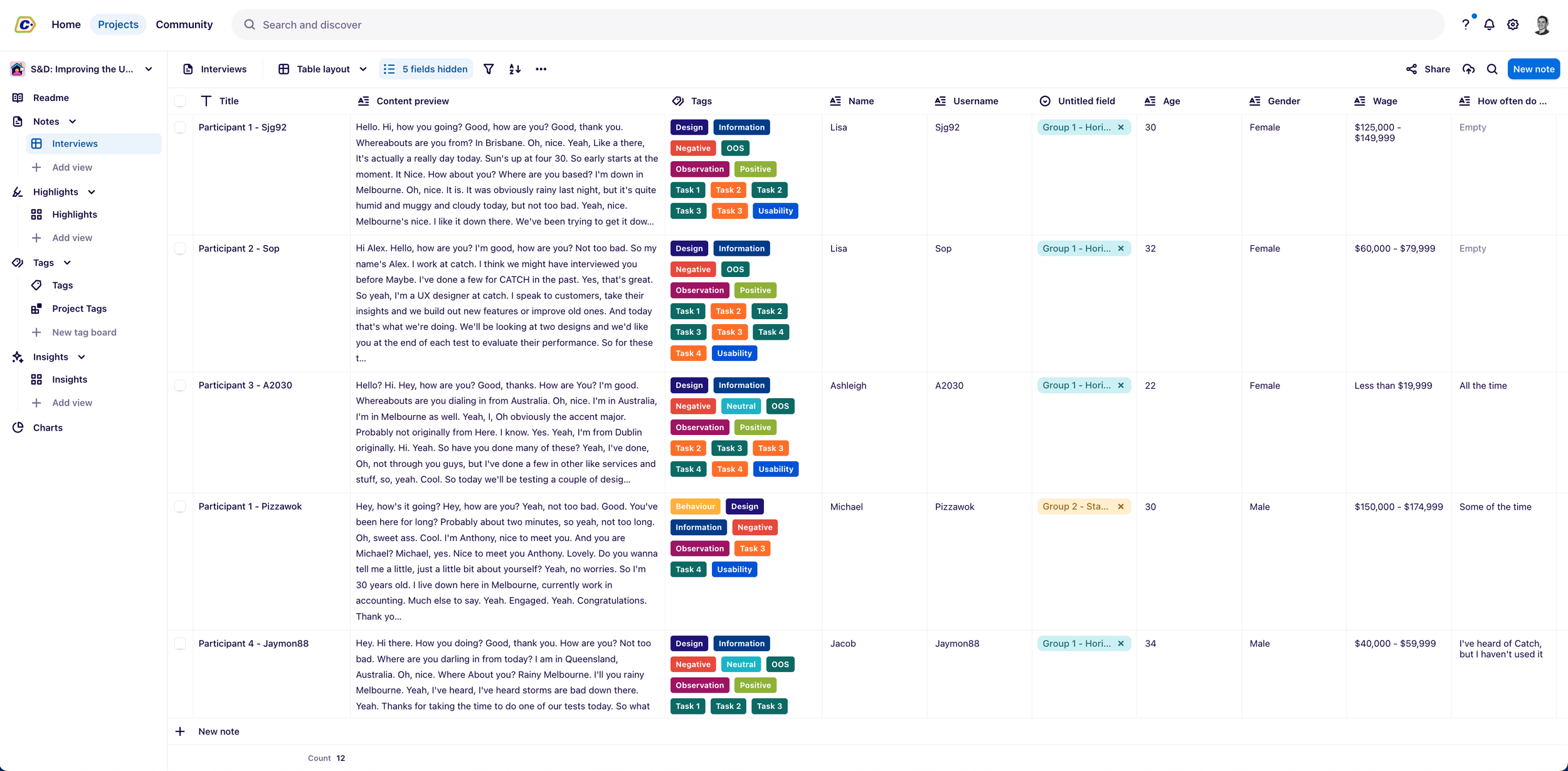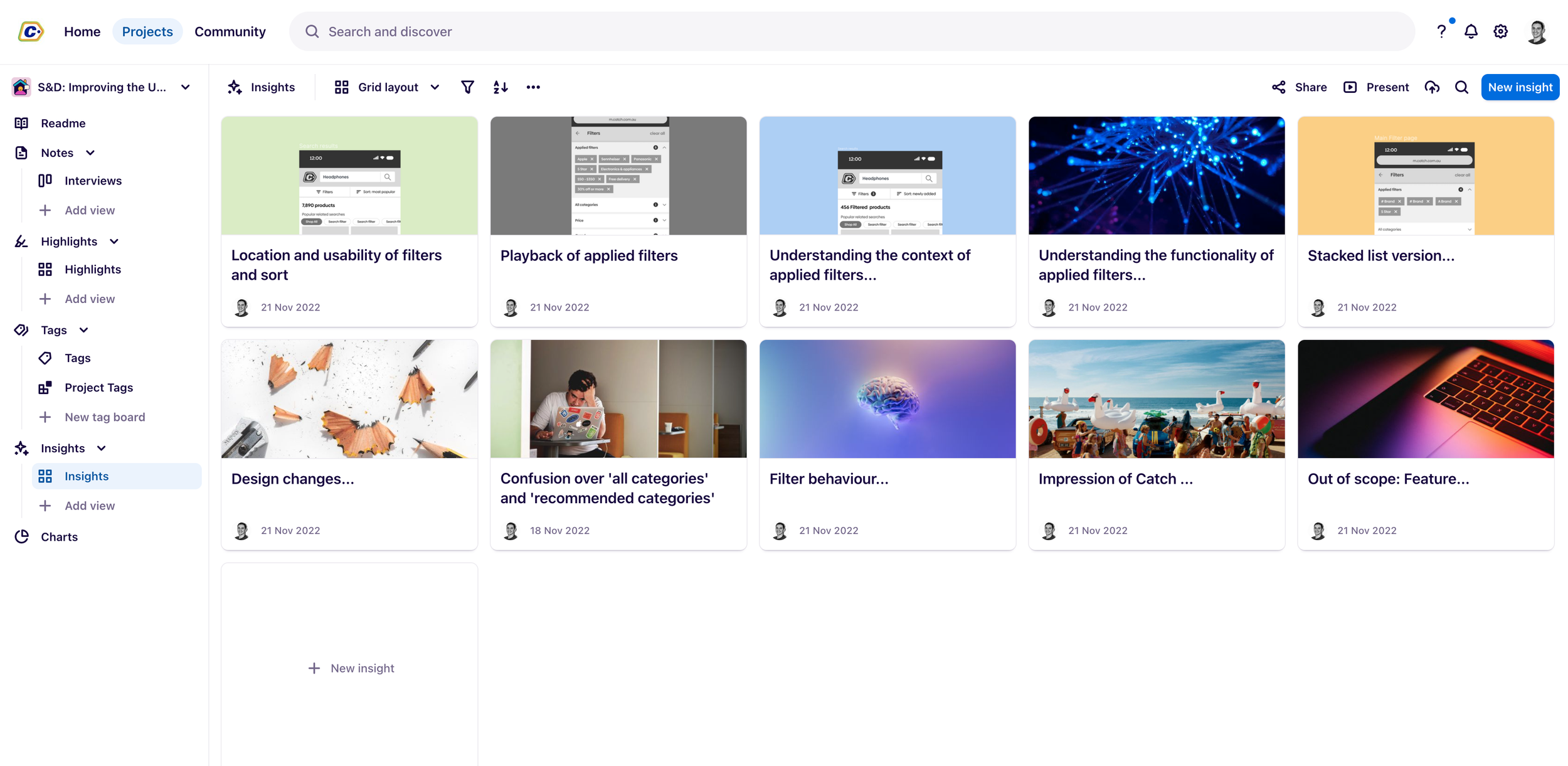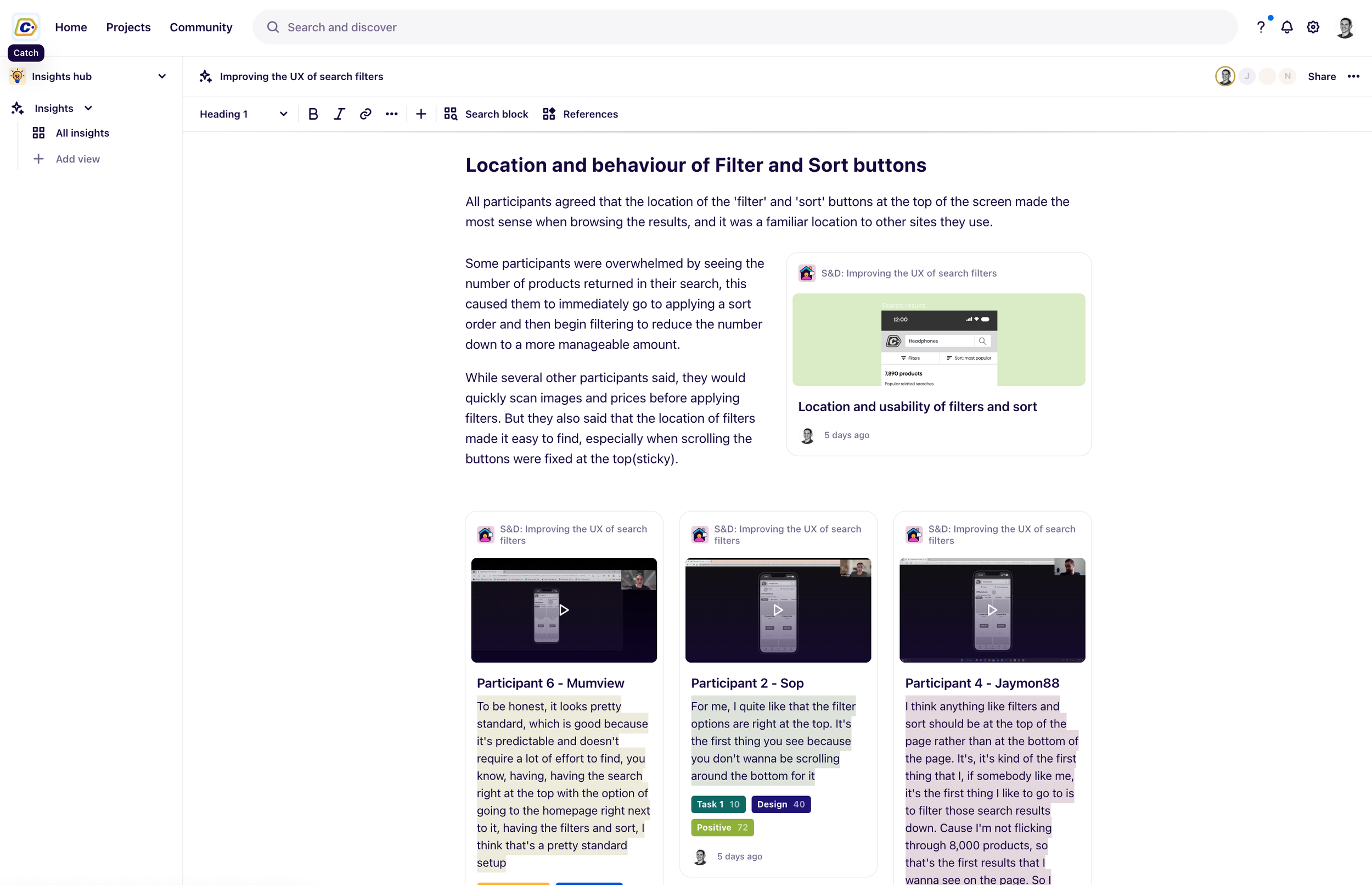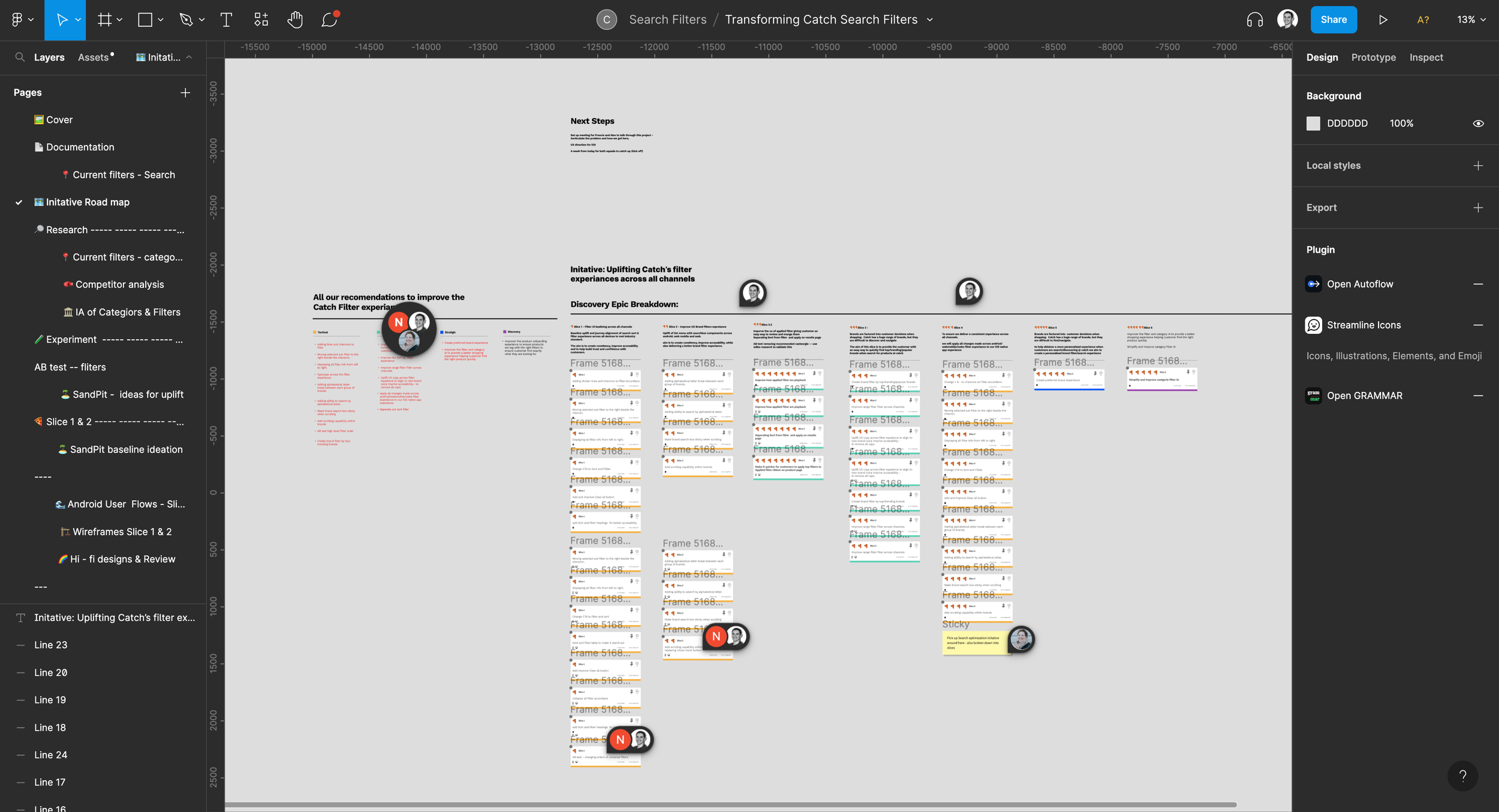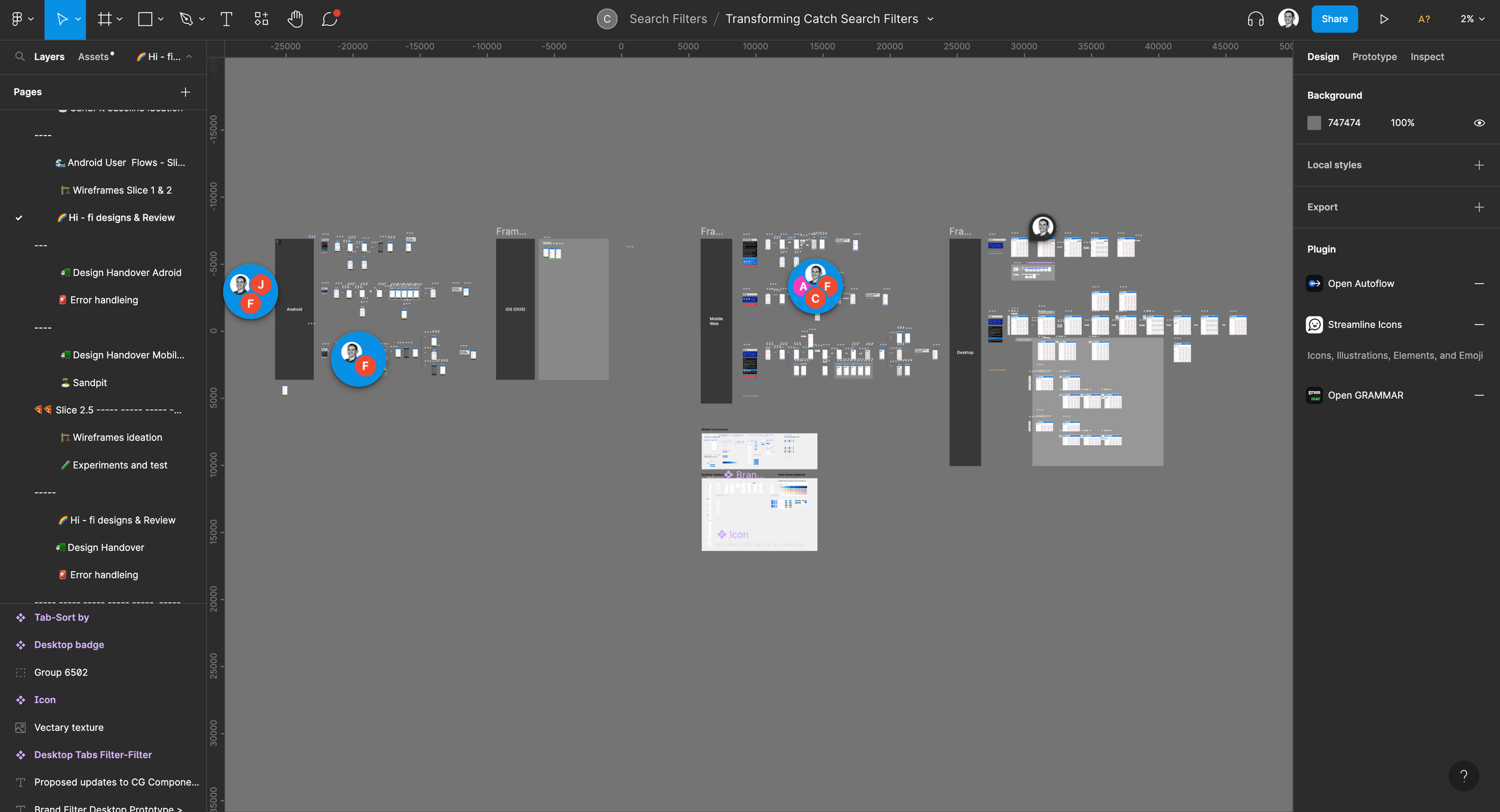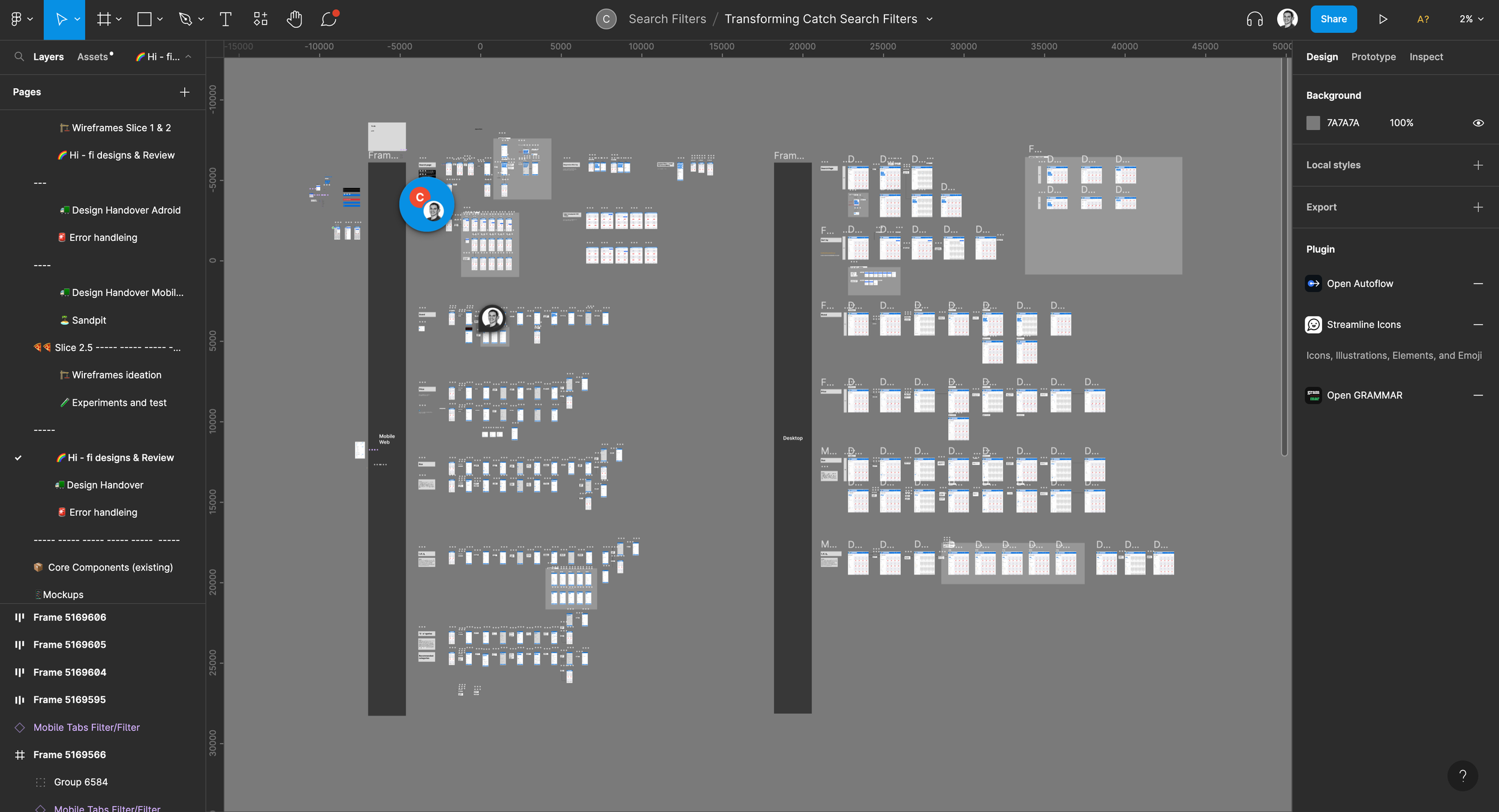Filters help to direct customers to products that best meet their needs. We set out to improve the experience of Catch's filters so that customers could find what they want faster and with more accuracy.
My role
Workshop Facilitation
User Research
Journey Mapping
Wireframing
Prototyping
Usability Testing
UI Design
Company
Catch
Team
Product Owner
Product Design
Business Analyst
Developers
QA Engineer
Data Analyst

Context
Catch is one of Australia’s largest online e-commerce platforms, helping millions of customers find amazing deals online. Since its early days as Catch of the Day, the business has evolved from a single product per day to over 8 million products and an entire marketplace business.
With such fast growth over the last few years, several problems appeared. Such a large product inventory meant that search results were often irrelevant, and Catch's search filter experience differs across all platforms.
Below, I will give you an overview of an initiative that I led with a team and spent three months uplifting Catch’s filter experience to make shopping easier and more enjoyable for all our customers.
The Problem
Sorting and filtering the results is essential to search for a product. Customers want to be able to order the search results by factors that matter most to them and improve the chances they find a product and purchase with confidence.
Catch’s search filter experience was inconsistent across platforms, with often bloated results and, at times, irrelevant, meaning our customers often struggle to quickly find what they are looking for, leaving them feeling overwhelmed, frustrated, and at times confused.
So we set about transforming Catch’s overall search filter experience to help customers find what they want faster and more accurately.
Goals
We wanted to uplift the existing UI to meet accessibility standards and industry best practices across our web and mobile apps.
We knew that customers were more likely to convert in sessions where they used at least one filter. So to increase conversion, it was critical to deliver a phenomenal filter experience.
We also wanted to understand what might be impacting drop-off rates.
We also wanted customers who came to Catch to shop confidently, remove as much friction as possible, and deliver results that best meet their needs, which would hopefully impact return shoppers as well.
Users
Our most recent customer interviews showed us we had three main shopper types, which helped to inform our design plan and research approach:
Researchers are goal driven. They collect information about products and prices and may be in any stage of research. They may be learning about new product types or maybe well educated about the products they’re looking for.
Bargain hunters need to be able to locate deals. Prices need to be clearly listed. Some shoppers are simply looking for bargains, enticed into purchases by the idea of getting a good deal.
Browsers are leisurely shoppers who go to their favourite sites or new sites for inspiration or to kill time. Browsing shoppers want to stay up on the latest trends, dream of future purchases, or be prepared for the next shopping trip.
Research Approach
I led a discovery piece that included primary and secondary research to understand what were the problems with Catch's current filter experience.
First off, I engaged our Data Analytics team to understand what current data we had on filter usage on the Catch website. I found some surprising numbers I confirmed and shared with squad members. In summary, low usage impacted drop-off rates and conversion. Of those customers that used filters successfully, there was a 50% higher conversion rate. However, I wanted to uncover what else might impact our drop-off rate.
With the data and numbers I had gathered, I started a secondary research board, conducted a landscape review and pulled industry best practices from The Baymard Institute and The Nielsen Norman Group. With this, I formed some hypotheses I wanted to validate with customer interviews and testing.
Customer Interviews
I partnered with a User researcher to set up remote customer interviews to understand why customers weren't engaging with filters and to validate what would increase filter usage. Together we came up with our test plan that included what was being tested, our objectives, our hypotheses, our target audience, what specific questions would be answered and how we would measure usability with a System Usability Scale, SUS rating.
To ensure we captured a broad range of Catch customers, we interviewed 12 participants, six female and six male. Their ages ranged from 22 to 62 years old. And the average household income went from $20K to $175K, with a mix of part-time and full-time employees. We also looked at the shopping frequency of the participants, four regular Catch customers who bought from Catch in the last week, 1 in the previous month and three longer than a month. Four irregular catch customers had purchased from Catch in the past 12 months, and four non-Catch customers had never shopped at Catch before.
Synthesis & Playback
I focused on the key questions we wanted to answer for the synthesis. I created project tags that I could quickly pull together into insights that became my findings and recommendations. I also tagged and made notes of other useful insights that were out of scope but still valuable to other parts of the business.
Once I had compiled my findings, I created a final report that I shared through playback sessions with stakeholders, the squad, and my wider team at showcase meetings.
Outcome
The recommendations from my research directly fed into our design backlog and delivery roadmap for the next two quarters. We broke down the epic into slices that were so tagged accordingly, whether they were tactical, midweight, or strategic improvements. We also noted which pieces need more discovery work before being picked up.
This approach allowed us to plan effectively with other squads involved in the final designs, handover and production of all the recommended changes.
So far, we have implemented changes and improvements to Catch's sort and filter experience, which has generated $16.5m in revenue, improved conversation by 18%, and our drop-off rate decreased from 48% to 27%.

